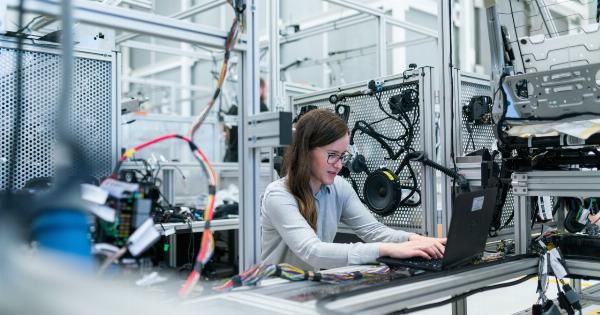Cancer is a devastating disease that affects millions of people worldwide. Early detection is crucial for successful treatment and improved survival rates.
In recent years, there have been significant advancements in cancer diagnostics, with researchers developing revolutionary methods to detect early cancer markers. These methods hold great promise in enhancing the accuracy and efficiency of cancer detection, leading to earlier intervention and improved patient outcomes.
1. Liquid Biopsy: A Game-Changer in Cancer Diagnostics
Liquid biopsy is a non-invasive method that involves the analysis of various biomarkers, such as circulating tumor cells (CTCs), cell-free DNA (cfDNA), and exosomes, present in body fluids like blood and urine.
This approach has revolutionized cancer diagnostics by offering a less invasive alternative to traditional tissue biopsies. Liquid biopsies can detect cancer at early stages, monitor treatment response, and identify genetic mutations that drive tumor growth.
2. Genomic Profiling: Unraveling the Genetic Mysteries of Cancer
Genomic profiling involves analyzing the DNA, RNA, and proteins of cancer cells to identify specific genetic alterations that play a role in tumor development.
This technique helps researchers understand the molecular pathways involved in cancer progression and discover potential targets for therapy. By detecting early cancer markers through genomic profiling, clinicians can personalize treatment plans based on the unique genetic makeup of each patient’s tumor.
3. Artificial Intelligence and Machine Learning: Transforming Cancer Detection
Artificial intelligence (AI) and machine learning have transformed various industries, and cancer diagnostics is no exception.
These technologies can analyze vast amounts of patient data, medical images, and pathology slides to detect patterns that may indicate the presence of cancer. By training AI algorithms, researchers can develop highly accurate cancer detection models that aid in the early identification of cancer markers and improve diagnostic accuracy.
4. Next-Generation Sequencing: Unlocking the Secrets of Cancer Genomes
Next-generation sequencing (NGS) technology has greatly advanced our understanding of cancer biology.
NGS allows researchers to sequence millions of DNA fragments in parallel, providing a detailed analysis of the genetic alterations present in cancer cells. This method enables the identification of genetic mutations, structural variations, and gene expression patterns associated with cancer.
By detecting early cancer markers through NGS, clinicians can identify high-risk individuals, initiate preventive measures, and develop targeted therapies.
5. MicroRNA Profiling: Tiny Molecules with Big Implications
MicroRNAs (miRNAs) are small RNA molecules that play vital roles in gene regulation. Aberrant expression of miRNAs has been associated with various cancers.
Researchers have developed techniques to profile miRNA expression patterns, allowing for the identification of specific miRNAs that may serve as early cancer markers. Harnessing the power of miRNA profiling can aid in cancer detection, classification, and prognosis, leading to timely interventions and improved patient outcomes.
6. Proteomics: Unlocking the Complexities of Cancer Proteins
Proteomics involves the systematic study of proteins and their functions within cells. By analyzing the proteome, researchers can identify protein markers that are indicative of the presence of cancer.
These protein markers can be detected in various body fluids, such as blood and urine, providing a less invasive method for cancer detection. Integrating proteomic analysis with other molecular techniques can enhance the sensitivity and specificity of cancer diagnostics, enabling early detection and targeted therapies.
7. Single-Cell Analysis: A Window into Cancer Heterogeneity
Cancer is a highly heterogeneous disease, with different cells within the tumor exhibiting varying genetic profiles and drug sensitivities.
Single-cell analysis allows researchers to study individual cancer cells, providing insights into the heterogeneity and evolution of tumors. This method can identify rare subpopulations of cells that may be responsible for disease progression and resistance to treatment.
By detecting early cancer markers at the single-cell level, clinicians can tailor treatment strategies to address the unique characteristics of each patient’s tumor.
8. Remote Monitoring: Bringing Cancer Detection to Your Fingertips
Remote monitoring technologies, such as wearable devices and smartphone applications, are revolutionizing healthcare by enabling patients to track their health parameters conveniently.
These technologies have the potential to facilitate the early detection of cancer markers by continuously monitoring physiological parameters and detecting deviations from normal patterns. Remote monitoring can provide real-time data to healthcare providers, allowing for earlier intervention and improved patient outcomes.
9. Nanotechnology: Big Possibilities in Small Particles
Nanotechnology involves the manipulation of matter at the nanoscale to create novel materials and devices with unique properties.
In cancer diagnostics, nanoparticles can be utilized to detect and target cancer cells, enhancing the sensitivity and specificity of cancer detection. Nanoparticle-based biosensors and imaging agents can detect early cancer markers with high precision, enabling early intervention and personalized treatment strategies.
10. Multi-Omics Integration: A Comprehensive Approach to Cancer Detection
Multi-omics integration involves integrating data from multiple omics technologies, such as genomics, transcriptomics, proteomics, and metabolomics, to gain a comprehensive view of the molecular changes associated with cancer.
By combining information from various omics platforms, researchers can identify complex interactions and biomarkers that may go undetected by individual techniques alone. This comprehensive approach to cancer detection can facilitate the early identification of cancer markers and improve diagnostic accuracy.




























